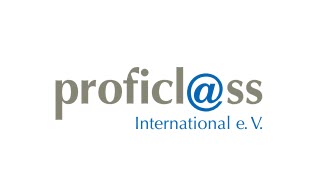In 2017, the General Assembly of proficl@ss International e.V. decided to give the go-ahead for a full-fledged integration of their classification model in ETIM and dissolve their association. Whilst many of the proficl@ss product classes were already part of ETIM, work began to add a total of 610 new classes to the ETIM classification model and (re-)assign 2.006 classes to the new sector Tools, hardware and site supplies. The integration will officially be finalized with the upcoming release of ETIM 8.0 in September 2020. But how did this decision come about and, more importantly, in what way will the integration of proficl@ss with ETIM be beneficial to ETIM and its members and users?
Product data management specialist Karl Pappas got involved in ETIM as early as 2003. He explains: “It was around that time, that proficl@ss International, a similar classification standard organisation in Germany, was launched. They were basically doing the same as ETIM, except their standard was not internationally used and held a wide variety of product classes ETIM didn’t cover, including for example door and window fittings, workshop equipment, garden and landscaping products and clamping devices. Working together simply made sense”.
ETIM & proficl@ss: similar standards, different setup, different products
Over time, ETIM adopted various proficl@ss classes and vice versa. Mutual developments were checked, compared and exchanged on a yearly basis to improve and expand both standards. The ever-growing overlap of the assortment tools, hardware and site supplies as well as the classes from the electro sector motivated the management board of proficl@ss – in close coordination with ETIM Germany – to explore a full integration of the proficl@ss model in ETIM.
A broader scope, a stronger standard
After careful deliberation, all agreed that a full integration would be beneficial to both parties in the long run, as it would result in a broader scope, more means, more members and users, a stronger standard. Immediately following the mutual decision of both organisations, with the unanimous approval of all proficl@ss members, the first steps toward a full integration of the proficl@ss classes with ETIM were taken. ETIM 8, which will be officially launched next September, marks its completion and will offer tool and hardware manufacturers and wholesalers exactly what they need for their product data management. This outlook has already led to almost all proficl@ss members as well as newcomers to join ETIM Germany, but has also triggered other companies outside Germany: ETIM France and various Scandinavian countries have already identified multiple companies in their region that have shown active interest in the new ETIM Tools sector.
ETIM 8: ready to conquer the world
The integration with proficl@ss enforces ETIM on different levels, by accommodating current members that also have products in the tools sector and by boosting further globalisation and expansion in terms of new markets: as more and more countries turn to ETIM in existing and related fields, it made perfect sense for ETIM to integrate proficl@ss in its entirety with its existing standard.
Karl Pappas: “I think most of the attraction of ETIM lies in the fact, that it truly is an independent international standard that is continuously further developed by and for its members and users. It is this ownership of members that gives ETIM the edge. With ETIM 8, we created a great base for the Tools sector to conquer the world. Thanks to the added 610 and the 2,006 (re-)assigned classes in ETIM, manufacturers and wholesalers of products ranging from sorting magnets and compressed air tools to construction site equipment and from drilling tools and measuring devices to lifting equipment, will now be able to work with classified product data. And although not every country will adopt the classes of the Tools sector right away, as we have seen with the HVAC sector, it will only be a matter of time. After all, if you are looking for a product standard to improve communications, why not use a proven one that already covers your sector and products?”.
